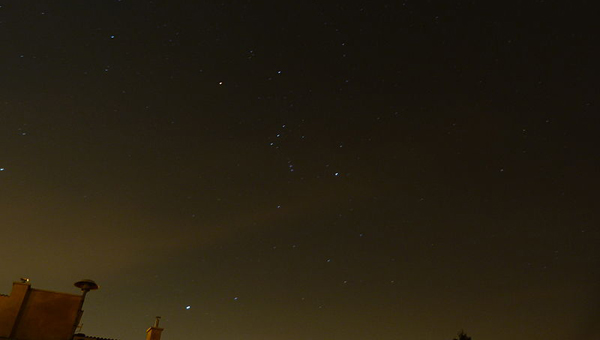A strange light suddenly appeared in the sky some 1,The Doctor Has Big Boobs 2800 years ago. Chinese astronomers recorded the event, calling it a "guest star.'' It turns out the light, visible for eight months, was an exploded star, a violent supernova deep in our galaxy.
Now in the 21st century, scientists at the National Science Foundation's NOIRLab — which runs big telescopes across the U.S. and elsewhere — turned a giant telescope to the cosmic scene, capturing a rare, detailed view of the historic blast. This fragmented ring-like cloud of space debris is called RCW 86.
"Draped around the outer edges of this star-filled image are wispy tendrils that appear to be flying away from a central point, like the tattered remains of a burst balloon," NOIRLab said in a statement. "These cloud-like features are thought to be the glowing remains of a supernova that was witnessed by Chinese astronomers in the year 185 C.E."
You May Also Like
SEE ALSO: Huge, mysterious blast detected in deep space
 The remnant shell of the supernova explosion SN 185. Credit: CTIO / NOIRLab / DOE / NSF / AURA T.A. Rector (University Of Alaska Anchorage/NSF’s NOIRLab) / J. Miller (Gemini Observatory / NSF’s NOIRLab) / M. Zamani And D. De Martin (NSF’s NOIRLab)
The remnant shell of the supernova explosion SN 185. Credit: CTIO / NOIRLab / DOE / NSF / AURA T.A. Rector (University Of Alaska Anchorage/NSF’s NOIRLab) / J. Miller (Gemini Observatory / NSF’s NOIRLab) / M. Zamani And D. De Martin (NSF’s NOIRLab) This Tweet is currently unavailable. It might be loading or has been removed.
To capture this burst cosmic balloon, astronomers took images with the high-resolution Dark Energy Camera, which is mounted to the Víctor M. Blanco 4-meter Telescope at the Cerro Tololo Inter-American Observatory in the dark, dry Chilean mountains.
The supernova blast expanded rapidly in space, some 8,000 light-years away. Astronomers suspect that a sun-like star that had spent all its fuel and been reduced to a searing hot core, called a white dwarf, which then progressively ripped material away from its nearby companion star (unlike our solar system, most solar systems have two or more stars). Eventually, the white dwarf couldn't support the extraordinary weight of the stolen stellar material. It collapsed, and exploded. Technically, this is called a "type Ia supernova."
"These supernovae are the brightest of all and no doubt SN 185 [this specific supernova's name] would have awed observers while it shone brightly in the night sky," NOIRLab explains.
Want more scienceand tech news delivered straight to your inbox? Sign up for Mashable's Top Stories newslettertoday.
Related Stories
- Amazed scientists watched a giant star explode for the first time
- The most extreme space explosions and crashes of 2022
- Spectacular Webb telescope image shows a stellar death like never before
- The best telescopes for gazing at stars and solar eclipses in 2024
- Webb telescope just found massive objects that shouldn't exist in deep space
Centuries later, with a powerful telescope, we can all glimpse the aftermath, as a ring of star remains still persist around the explosion.
One day, thankfully billions of years into the future, our medium-sized star will reach the end of its life, too. It will bloat and become giant and red, potentially growing large enough to engulf Earth. But our star won't be massive enough to blow up. Instead, it will shed its outer layers as it exhausts fuel, leaving a dense, hot core. Yes, the sun's destiny, too, is to become a white dwarf star, orbiting our galactic center for eons and eons.

